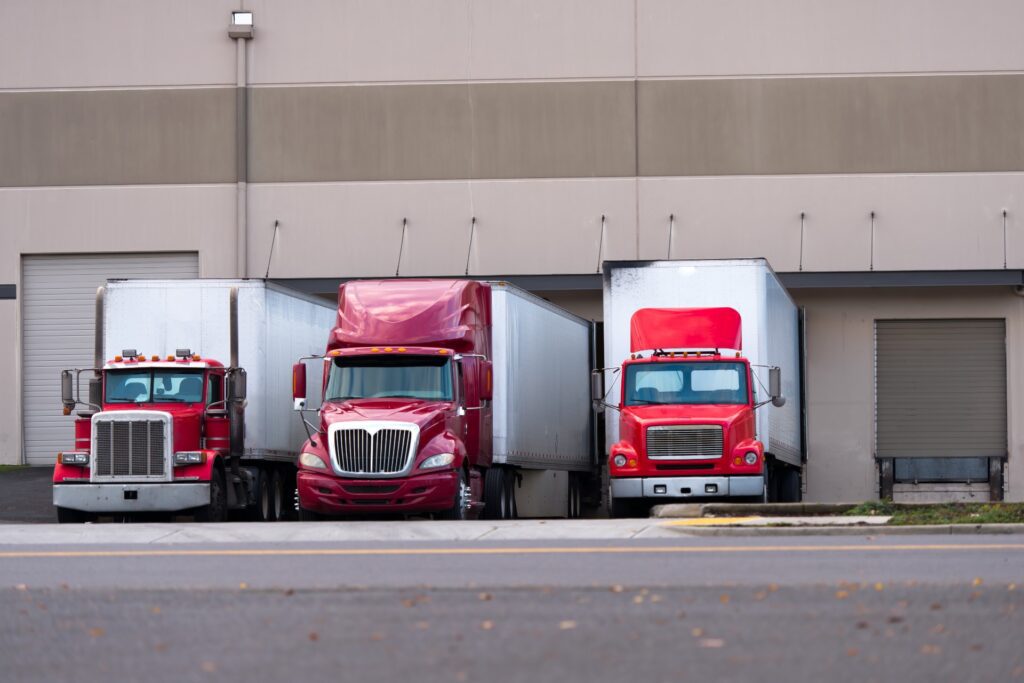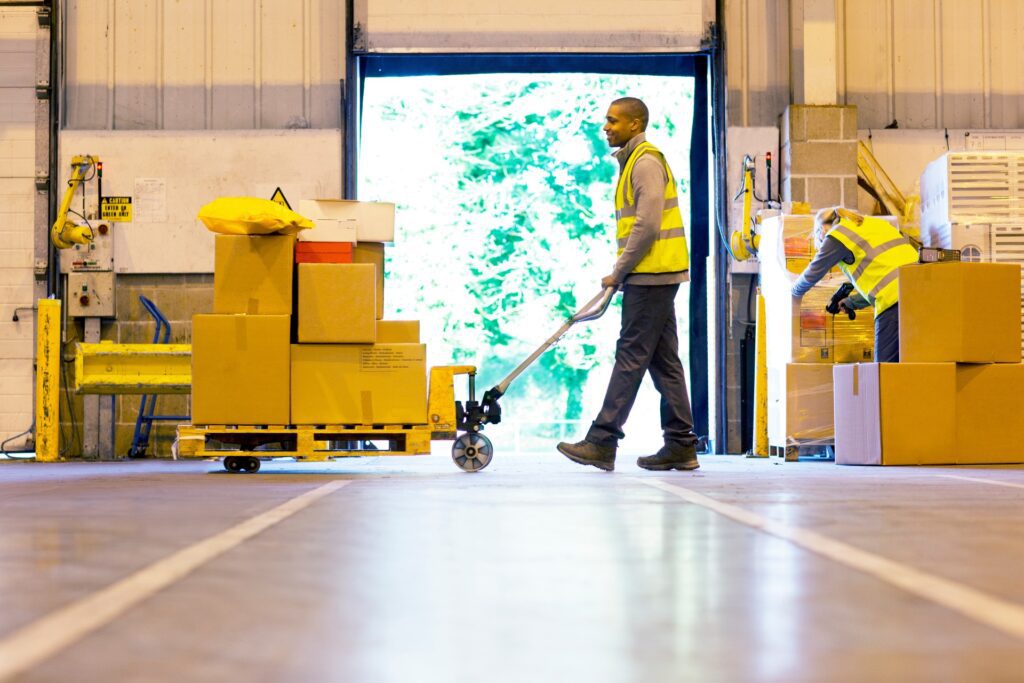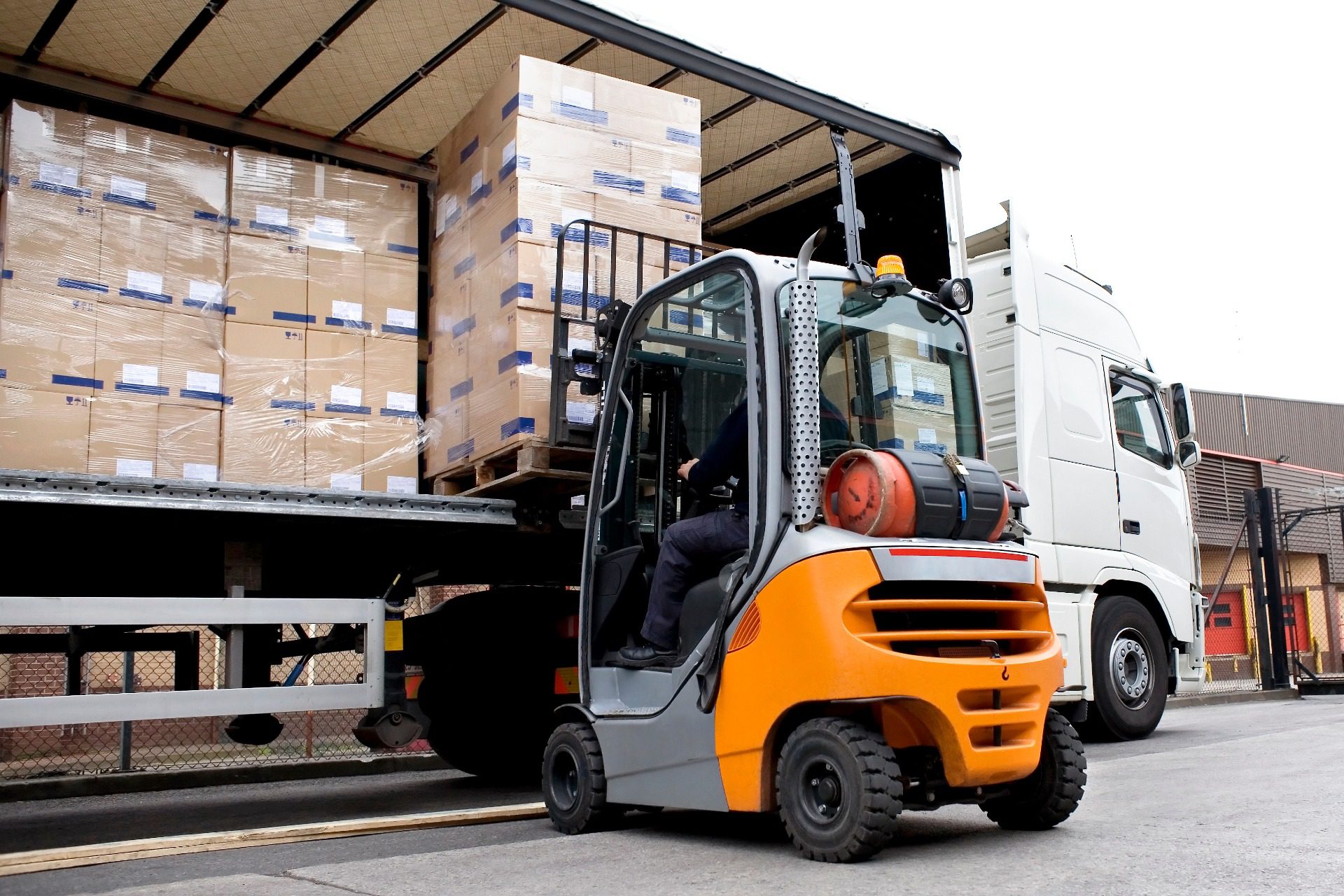What is Cross Docking?
Cross docking is a strategy in the realm of logistics that aims to minimize product warehousing time. With this strategy, products are transferred directly from their inbound mode of transportation to outbound vehicles that will continue them along the supply chain with minimal to no storage time in between. This transfer between carriers generally takes place at a cross docking facility, where products are quickly sorted between inbound and outbound shipments’ docks for optimal delivery times and decreased time spent sitting in warehouses as non-moving inventory. Cross docking services can greatly reduce storage costs and supply chain inefficiencies, which is why many businesses are turning to third party logistics providers with cross-docking capabilities to boost their logistics operations and ultimately generate more revenue.
Key Principles of Cross Docking
There are a few main tenets that all cross-docking service providers follow. These fundamental principles are key to efficient cross docking practices and include:
- Minimal handling time: Products should be quickly, safely, and efficiently moved from inbound dock to outbound dock with as little disruption as possible.
- Streamlined processing: Products should be processed and accounted for with minimal downtime using the latest technologies and methods.
- Reduced storage time: If possible, products should not need to be stored due to proper supply chain coordination. In the case that storage is necessary, that time should be optimally minimized.
- Centralized facility locations: The service provider cross docking warehouse should be strategically located for efficient delivery times to high demand locations.
- Clear communication: Operations should be transparent and communication avenues should always be available between all parties involved in the supply chain process.
- Reliability and flexibility: Cross docking service providers should strive for the highest levels of reliability and should have protocol in place to adapt to changes or disruptions in supply and demand quickly and efficiently.
The History of Cross Docking
Cross docking traces its origins to World War II with the US military’s efforts to efficiently and effectively distribute supplies to troops without the need for extended periods of warehousing. This approach to logistics entered the retail side of business during the 1980s with the rise of Walmart, when the large-scale retailer implemented it as its core distribution strategy. With the perpetual advancement of technology, the process of cross docking has become more refined and widely used across a variety of different industries. Today, many third party logistics providers use this method of supply chain movement to streamline logistics for companies that otherwise wouldn’t have access to a cross dock facility. Cross docking is one of the most important aspects of the third party logistics industry, as the time it saves greatly reduces inventory costs and helps optimize supply chain efficiency for businesses across all sectors.
Types of Cross Docking
Cross docking is an umbrella term for the overall strategic movement of products from inbound to outbound transportation. The two main types of cross docking include:
Pre-Distribution Cross Docking
This type of cross docking occurs prior to products reaching a distribution center. In this cross dock warehouse terminal, products are quickly sorted and consolidated based on destination. This allows for a more efficient transportation of goods and ensures that products going to similar locations are grouped together for most optimal movement through the supply chain. This type of cross docking is concerned with the initial step along the supply chain where products are received from suppliers and sent via a single vehicle to the correct distribution center. Ideally, very little storage occurs during this type of cross docking, as the main goal is to move products further along the supply chain as quickly and efficiently as possible.
Post-Distribution Cross Docking
This type of cross docking occurs once products have been received at a distribution center. Here, products are received from inbound transportation and further sorted for distribution to final destinations. Products are also packaged and prepared more thoroughly during this process, with methods such as kitting being implemented in the case of direct-to-consumer shipments. The combination of pre-distribution and post-distribution cross docking makes it so that products are continually advanced along the supply chain without prolonged periods of storage.
Advantages of Cross Docking
Cross docking offers a myriad of advantages for product movement along the supply chain. These advantages include:
Reduced Costs and Time Savings
The intrinsic nature of cross docking drastically reduces inventory carrying costs. Cross docking aims to reduce the number of vehicles needed for product transportation by efficiently sorting and grouping packages bound for similar destinations. This results in much quicker turnaround times between order placement and receival, saving you both time and money.
Improved Efficiency and Productivity
Cross docking has revolutionized the efficiency and productivity of logistic operations. By streamlining supply chain movement, cross docking makes it so that there is rarely downtime between shipments, which ensures that employees are productive.
Faster Shipping and Receiving Times
It’s no secret that quicker delivery times result in happier customers. Cross docking helps to accelerate the overall movement of goods in and out of each facility along their journey from supplier to consumer. This results in your product reaching customers as quickly as possible, ultimately translating to more profits.
Less Inventory Holding Costs
Cross docking makes it so that products spend little to no time in storage and are instead in constant movement towards their eventual destination. This helps cut down on your storage costs and associated expenses, freeing up more capital for business growth and expansion.
Implementing Cross Docking Best Practices
When done correctly, cross docking is the most effective way to get your product in the hands of consumers as quickly as possible. For this to occur, third party logistics providers that offer cross dock services must uphold themselves to the highest industry standards and best practices. Proper implementation of cross docking involves:
Effective Facility Design for Cross Docking Operations
The layout and infrastructure of cross docking facilities must be optimized for maximum efficiency. This means that facilities are designed for the most optimal and quickest movement of packages from one mode of transportation to the next. This aspect of cross docking operations is key to successful implementation, as the actual facility itself needs to be built for the reduction of product downtime and storage.
Optimizing Supply Chain Collaboration
Communication and collaboration are essential to successful cross docking operations. One of the core principles of a cross docking operation is effective coordination of transportation. This means that communication between suppliers, carriers, and retailers or consumers is clear and effective. By optimizing collaboration between the various parties involved throughout the supply chain, cross docking facilities and third party logistics providers ensure that product movement is streamlined.
Utilizing Advanced Technology and Automation
The use of cutting edge technology is crucial in the realm of logistics. Cross docking facilities must be outfitted with the latest innovations like barcode scanning, RFID, and automated systems to keep up with the logistical needs of the businesses they serve. The use of advanced technology and automation increases facility productivity and cuts down on human error.
Challenges and Risks of Cross Docking
Like with any other industry, there are challenges and risks involved in the process of cross docking. This means that choosing a third party logistics provider that is experienced with the methods of cross docking and able to adapt to any unforeseen circumstances is vital. Some of the challenges involved with cross docking include:
Managing Logistics and Transportation
Multiple carrier services are often used throughout the process of cross docking and in the movement of goods along the supply chain. This can sometimes result in difficulties with coordinating transportation schedules, especially when there are disruptions along certain legs of the supply chain. A reputable cross docking service provider will know how to adapt to these disruptions with minimal delay to your product’s overall shipping time.
Ensuring Accuracy and Quality Control
Cross docking is a rapid process, as it is mainly concerned with moving products as quickly as possible. This means that cross docking facilities have to have protocol in place that makes sure products are accurately sorted as they move from location to location. Quality control is also key to the successful transfer of products during the cross docking process, as mishandled packages can result in broken or damaged goods.
Addressing Potential Delays and Disruptions
Weather conditions, road construction, crashes, and other potential delays are always of concern to cross docking service providers. This is why experienced providers have strategies prepared for when unexpected disruptions occur. These strategies include real-time tracking, diversified suppliers, contingency planning, clear communication channels, and buffer stock in the event of product shortages or fluctuating periods of demand.
Industries that Benefit from Cross Docking
All different types of industries can benefit from cross docking if their product demand is high enough. That being said, some of the main industries that can benefit from cross docking include:
Retail and E-commerce
Retail and e-commerce often come with fast-paced demands for products. Retailers with physical storefronts need to keep their products in stock and often don’t have large inventory storage capabilities. This is where the drastically reduced delivery times provided by cross docking help these types of businesses meet their consumers demands. With e-commerce based businesses, cross docking helps move products directly from suppliers to consumers in the most efficient and timely manner possible. This is crucial, as lengthy delivery times can ruin the growth and success of e-commerce businesses.
Manufacturing and Distribution
Manufacturing and distribution businesses rely on cross docking to support just-in-time (JIT) production. JIT production involves delivering raw materials or components to facilities exactly when they are needed, which cuts down on storage time and costs. This helps maximize the efficiency of their production process while simultaneously saving them money.
Food and Beverage
Cross docking is essential for the transportation of perishable goods. From the second any food or beverage product leaves its supplier, the quality of the product is immediately in jeopardy. Cross docking helps these types of products move as quickly through the supply chain as possible while maintaining their freshness.
Future Trends in Cross Docking
The ever-advancing nature of technology supports future trends and innovations in cross docking and logistic operations. Some of these future trends include:
Internet of Things (IoT) in Cross Docking Operations
IoT devices are becoming increasingly necessary in cross docking operations, as they help to support real-time monitoring and data analysis. These types of non-standard computing hardware increase the transparency of the various supply chain operations and help analyze data about product movement to improve the overall efficiency of cross docking facilities.
Artificial Intelligence (AI) and Machine Learning
AI and machine learning are becoming more popular in cross docking operations because of their ability to provide predictive analytics. These predictions can be used to optimize cross docking methods for increased productivity, as well as help cross docking service providers prepare for fluctuations in supply and demand.
Robotics and Automation in Cross Docking Facilities
Robotics and automation are frequently used in cross docking facilities because of their reliability and minimization of errors. By automating the sorting and packaging processes within the distribution centers and cross docking facilities, products are more accurately and efficiently moved through the supply chain.
FAQs
What is the main goal of cross docking in supply chain management?
The main goal of cross docking is to streamline the movement of goods throughout the supply chain while minimizing storage time. In doing so, cross docking helps to reduce overall storage costs, enhance the efficiency of product transportation, and expedite the process of order fulfillment.
How does pre-distribution cross docking differ from post-distribution cross docking?
Pre-distribution cross docking occurs prior to products arriving at a distribution center, whereas post-distribution cross docking occurs after receival by a fulfillment center and involves the sorting and preparation of products before delivery to final destination.
What are the key benefits of cross docking for retailers?
Retailers need to keep up with changing customer demands and need to be able to quickly restock a variety of different products. Cross docking allows for this while simultaneously reducing inventory holding costs.
Can cross docking work for industries with strict quality control, like food and beverage?
Yes. Cross docking can be used for industries like food and beverage that have strict quality control. Careful monitoring and frequent quality checks should be in place at cross docking facilities to ensure product freshness.
How does collaboration with suppliers and carriers impact the success of cross docking operations?
Successful cross docking operations rely on effective collaboration with suppliers and carriers. Through open and clear communication, cross docking operations prevent delays and maximize efficiency.
What role does technology play in cross docking?
Technology like barcode scanning, RFID, AI, robotics, and automation help to enhance the accuracy, real-time tracking, and predictive analytics of cross docking operations. These innovations are essential for success and growth within the industry.
What are the potential challenges in managing logistics and transportation for cross docking?
Careful planning and adaptability are necessary to combat challenges with the coordination of transportation schedules, the management of potential delays, and the protection from supply chain disruptions in cross docking operations.
How can companies address accuracy issues during rapid transfers in cross docking facilities?
To avoid issues with accuracy during rapid transfers, cross docking companies can implement strict quality control procedures, utilize automation and robotic technology, and provide intensive training for employees.
Are there instances where cross docking might not be suitable?
While cross docking can benefit most companies, it may not be suitable for products that require abnormally high levels of quality checks, extremely specialized storage conditions, or in instances where suppliers and retailers have limited coordination abilities.
What are some future trends in cross docking operations?
Future trends in cross docking operations include the integration of IoT devices for more accurate real-time tracking, increased usage of AI and machine learning for predictive analytics, and further enhancements and incorporation of robotics and automation within facilities.
Conclusion
Cross docking is crucial to modern supply chain management. By cutting down on storage time and streamlining the movement of products from supplier to consumer, cross docking can help you save money while simultaneously increasing customer satisfaction. At ShipCalm, our third party logistics services come implemented with cross docking capabilities, which means that you can trust us to handle your logistics operations with the highest level of speed, care, and efficiency. Contact us today for pricing and to learn more about how we can use cross docking to increase your business’ growth, reach, and profit.




